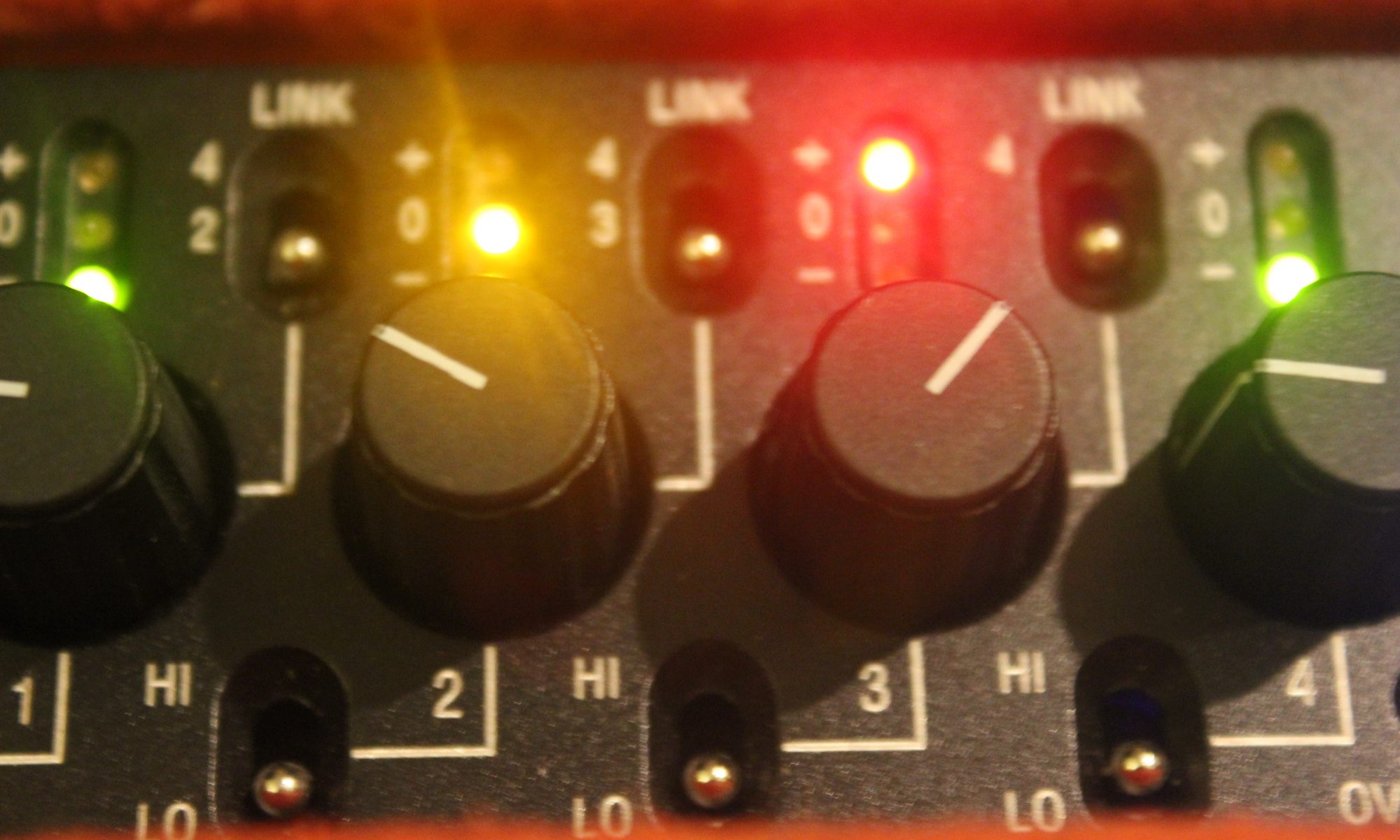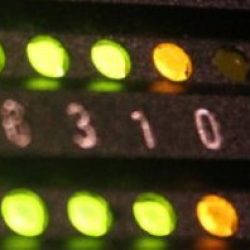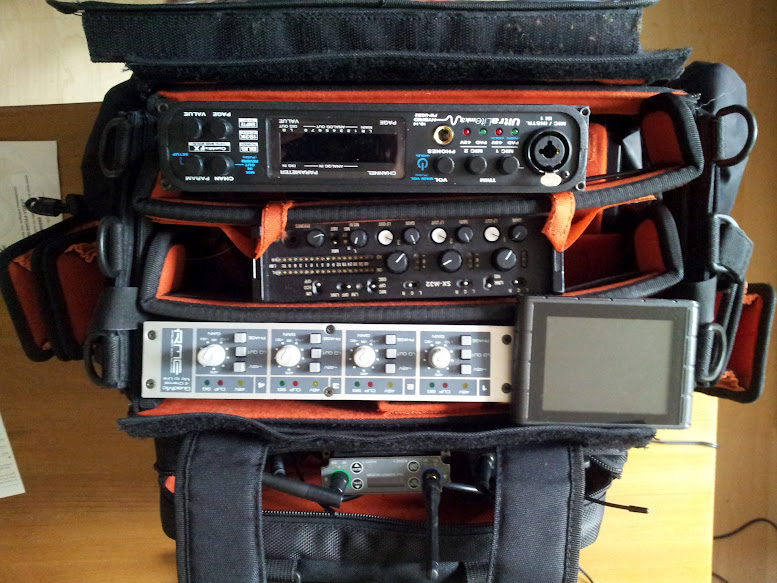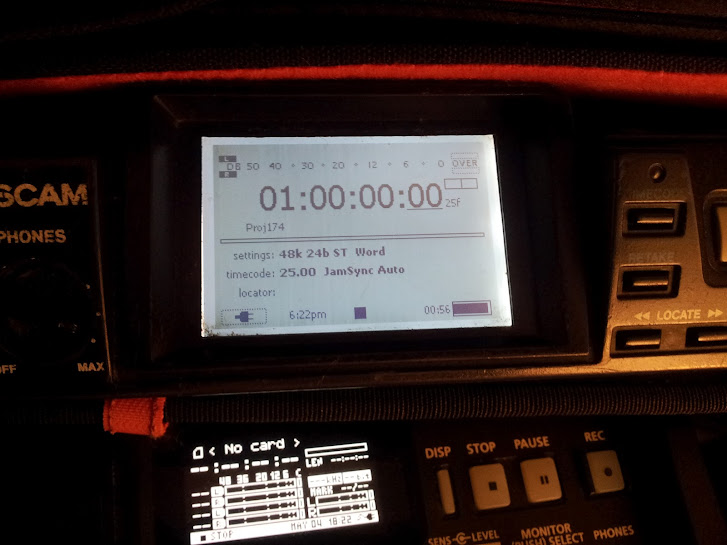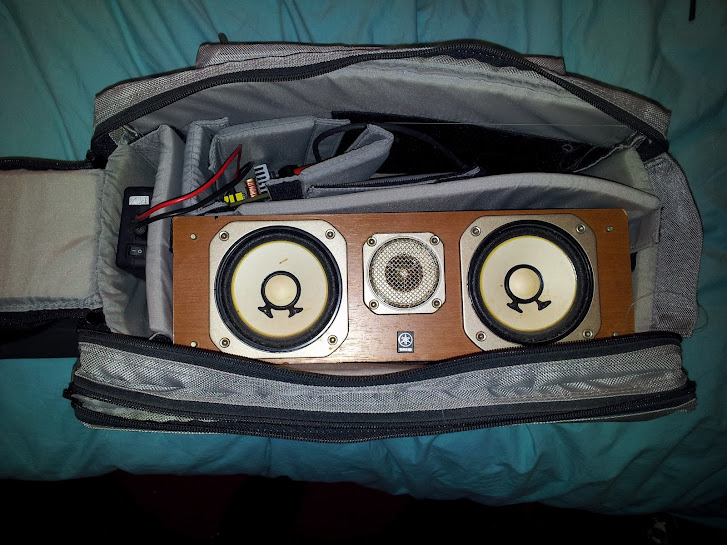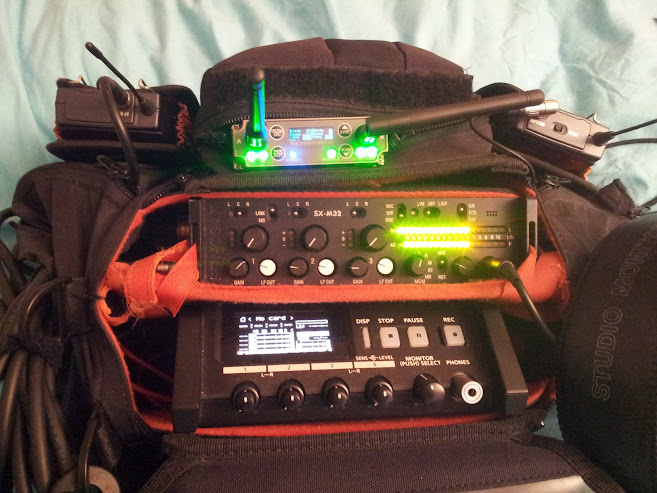
Here’s my bag- every sound recordist’s is a bit different and I thought I’d give you a tour:
Mixer
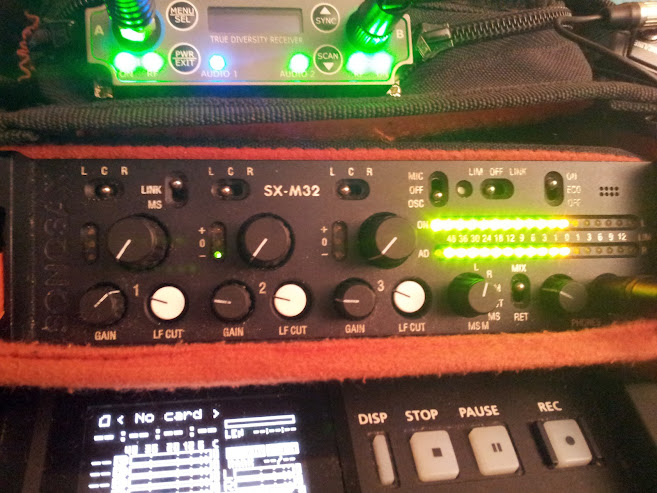
Logically, I’ll start in the middle. The mixer’s essentially the ‘heart’ of a sound recordist’s kit- with it the recordist can control the level of signals, so that a healthy signal to noise can be maintained but the signal is not distorted. It also has analogue limiters which will compress the signal during peaks (such as shouting)- this is one of the main differences between mixers built for broadcast and those built for music (in addition to build, powering options and outputs)
Each of the three larger knobs control the level of each signal being sent to the mix, whilst the gain knobs set how much each signal is amplified. LF cut is a filter which reduces the amount of lower frequencies present in the signal (which can be increased by microphones being placed close to the subject), this can also cut out some noise from the microphone being moved around and wind noise.
It will also power microphones and amplify their signals
Mixer ‘input side’:

Here’s a view from the left hand side of the bag. Here the inputs are going into the mixer on the left. The cable at the top goes to the boom microphone, whilst the cables with red and green bands come from a radio microphone receiver. The thinner red cables provide power and the black cable going into the recorder on the right comes from the mixer’s digital output
Mixer ‘output side’

This particular mixer (Sonosax SX-M32) has ‘direct outputs’, which means each of the amplified microphone signals can be sent out before they are mixed. This can give post production more options. Here the top cable, with the darker red ring sends a mix to the recorder and the other three send pre-fader direct outputs. The smaller ‘mono out’ usually goes to a radio transmitter, sending out a 1 channel mix. There are also a couple of other connectors out of view which include one for a sending a 2 channels to a camera and receiving one back so that I can hear what is being recorded to camera, when not using a separate recorder, and a smaller one which sends the mix digitally to the recorder.
Recorder
This is the box at the bottom of the main picture. Although it is also possible to plug microphones directly into this particular model, the quality and flexibility is not as good as using a separate mixer (there are a few recorders becoming available which can also operate as a mixer). This one (Edirol R-44) can record 4 channels of audio, as digital .wav files. Some recorders also have timecode generators which can be synchronised with cameras, making it faster to synchronise video and audio in post production. I also own a 2 channel recorder with timecode facility
Wireless

There are a number of situations where it is impossible, or extremely difficult to capture quality audio without using cables. Although the most expensive and advanced wireless systems are not as high quality or reliable as a cable, they’re close- and allow microphones to be placed where they couldn’t without wires.
This particular box (Wisycom MCR42) actually has 4 receivers inside, 2 per transmiter- selecting the one with the strongest signal. It also has emulation modes for other brands of receiver (Sennheiser and Audio Limited) and a very wide bandwidth, making it suitable for international use
Radios can also be used for sending signals, such as an feed to a director, boom operator, script supervisor or camera to aid with sync (or to send a timecode signal). There’s also a transmitter for this purpose on the right and second receiver on the left (single channel) for a third radio mic.
Powering
Inside the pocket at the back of the bag is the battery and distributor

From here the battery power is split between the mixer, recorder and 2 channel radio receiver. Here is the whole bag opened up:

Here you can see the red cables running to the recorder, mixer and radio receiver in the front pouch


